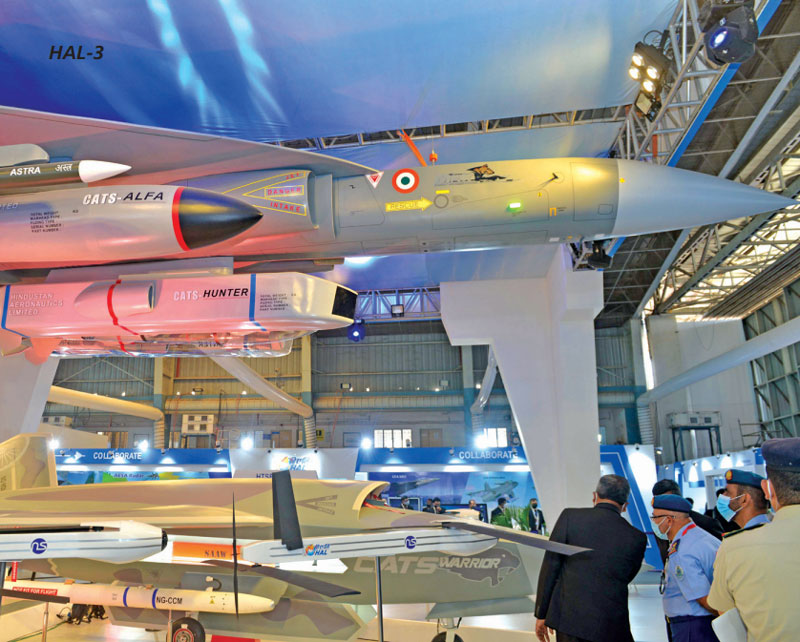National Effort
Gp Capt. Rajiv Kumar Narang (retd)
The US uses the term ‘Civil-Military Integration’ (CMI) for the integration of military and civil technology and industrial bases. The US CMI has seen several vicissitudes since the Second World War in which civil and military industries have gone through three stages, comprising pre-Cold War, Cold War and post-Cold War periods. In these three stages, the US civil and military industries were coupled, decoupled and coupled again, to form CMI in 1994. Chinese examined the CMI and articulated their Military-Civil Fusion (MCF) strategy to harness capabilities of both, civil and military technologies, to enhance the scale of production and economic viability. The Academy of Ocean of China has examined these developments in detail in an article in 2018.

HAL’s CATS programme of manned-unmanned teaming is an example
of public-private partnership
US CMI For National Industrial Base
The CMI in the US was first achieved when the Defence Technology and Industrial Base (DTIB) was integrated with Commercial Technology and Industrial Base (CTIB) during the Second World War to leverage strengths of both for technology development. The DTIB focuses on developing and manufacturing defence equipment like aircraft, tanks, ships, etc., while CTIB is focused on developing and manufacturing commercial machines, equipment such as cars, trucks, commercial ships, civil aircraft, other machines and equipment.
After the end of the Second World War, the defence and commercial technology and industrial bases segregated. As a result, DTIB was largely isolated from the commercial base and thus lost some of the benefits of larger number of buyers. This isolation raised the cost of defence goods and services and reduced the defence industry’s access to fastmoving commercial technologies. It also denied commercial firms the chance to exploit the results of large national level defence science and technology investments.
In September 1994, the US Congress’ Office of Technology Assessment, published a study titled Assessing the Potential for Civil-Military Integration: Technologies, Processes and Practices that aimed at bridging the critical gaps between the t
Subscribe To Force
Fuel Fearless Journalism with Your Yearly Subscription
SUBSCRIBE NOW
We don’t tell you how to do your job…
But we put the environment in which you do your job in perspective, so that when you step out you do so with the complete picture.







